This past week was a busy but good one — three different presentations related to Texas flora and fauna kept me at a nonstop pace for a while. But somewhere in there I managed to get a few pictures, too. On Wednesday I had the pleasure of talking about wildlife gardening with the Comal Master Gardeners 2013 class, and while in New Braunfels, I visited Landa Park. The Arboretum there is home to many very old and beautiful trees, and it gave me a chance to see what some of my younger (and as such still small) trees will hopefully look like one day. For example, my Anacuas are only about 5-6 feet tall, but hopefully as they blossom, literally and figuratively, they will be the delights of my garden and look like this:
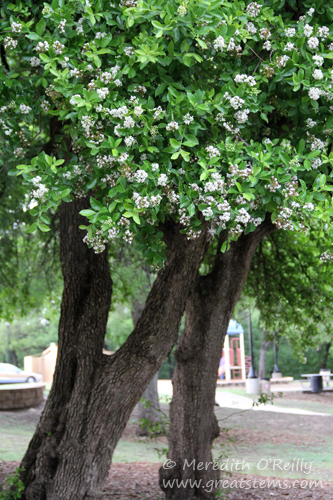
Anacua (Ehretia anacua)
And this:
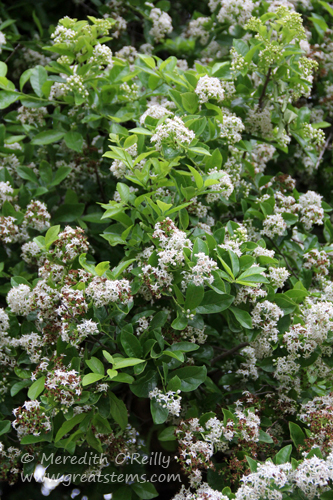
No blooming tree is complete without a close-up:
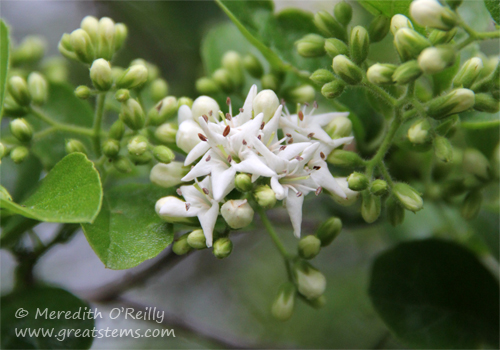
Seeing stars, like I am? Just look at those blooms!
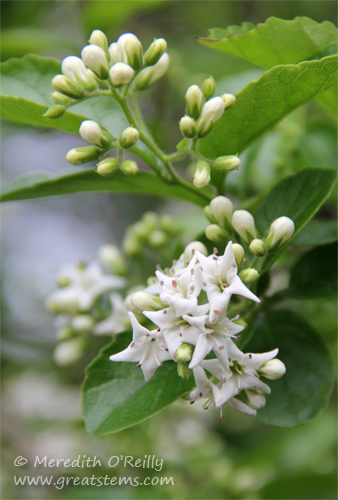
Do you see why I love them so? Actually, I adore them mostly for the sandpaper-like texture of their leaves, completely unexpected given their bountiful white star-like blooms and the delightful fragrance they emit. It’s just absolutely endearing that such a lovely plant could have such roughness overall. FYI, these plants grow in South Texas and Mexico, as far north as Austin. Don’t be fooled into thinking you want one, too, if you live up north!
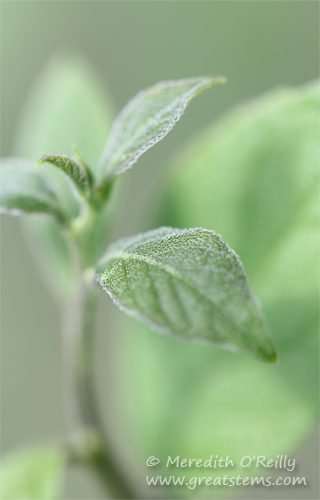
Someday I’ll be able to show you pictures of their edible orange and yellow berries, so beloved by birds (you can take a peek at the Wildflower Center’s image here). But at least I can show you the unusual fluted appearance of the trunk of a mature Anacua:
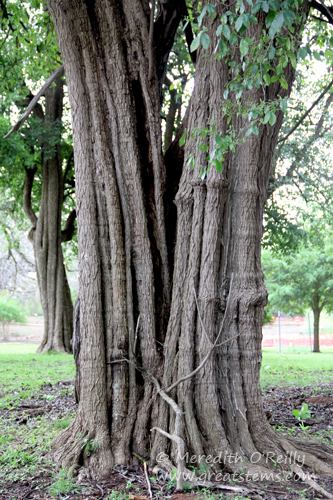
Such character!
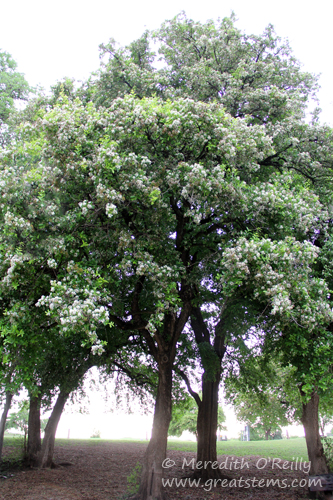
Here you can see a small grove of Anacuas near the Landa Park golf course.
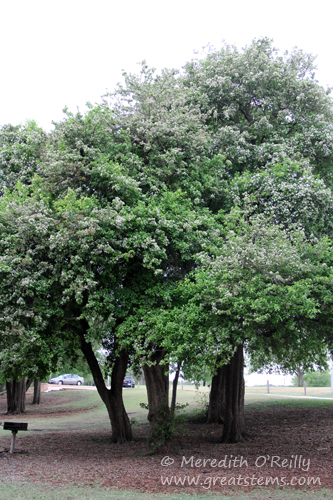
They really are gorgeous trees, and I’m so proud to have two in my yard. I would plant more if I could, but my other trees might get jealous (and actually, I’m starting to run out of room for big trees). Still, I can’t wait for them to get big.
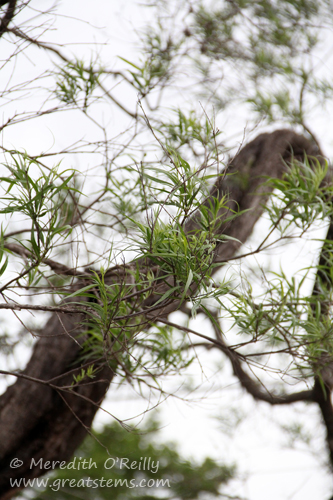
Desert Willow
Landa Park has many other beautiful tree specimens, including their historic Founder’s Oak, more than 300 years old (I didn’t have a chance to get a picture of it — alas!). Above is a very mature Desert Willow — I had no idea that eventually they take on a more gnarly appearance than a willowy one, but of course that endears them to me, too.
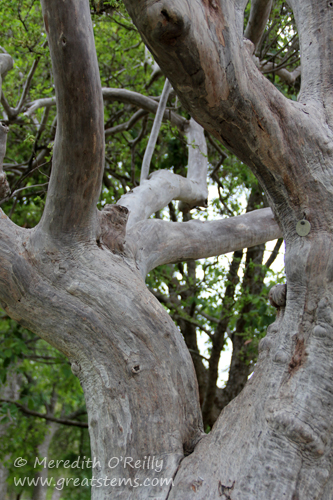
Texas Persimmon
Also surprising was the enormous size of this Texas Persimmon, whose trunk and branches remind me of Hulk Hogan.
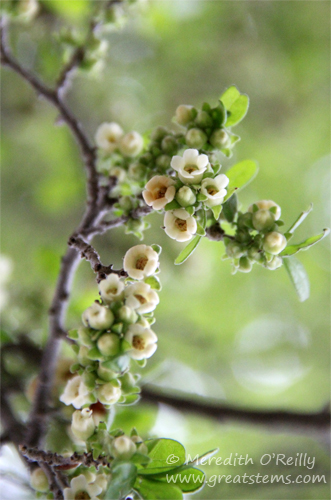
The tree’s tiny blooms will soon produce fruit, edible by birds and mammals (including us — mmmm, persimmon jelly). In comparison, my little backyard Texas Persimmons have a ways to go yet (but one of them did produce its first 2 fruits just last year).
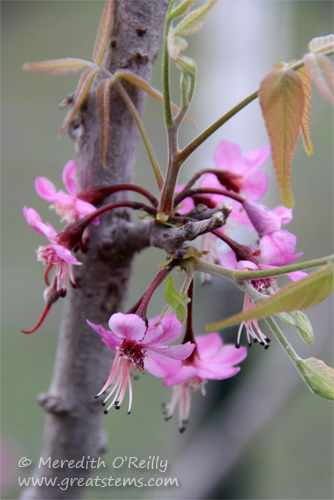
Mexican Buckeye
While many of the trees in Landa Park are decades to centuries old, young trees of a variety of species, such as the Mexican Buckeye in bloom above, have been planted in recent years in order to continue to further beautify and expand the diversity of the Arboretum. These plantings, as well as the ongoing care to maintain and monitor the health of all the park’s trees, is a combined effort of the city of New Braunfels, its Urban Forestry program, and many local garden clubs and organizations — they recognize the importance of trees to a community, and the results are simultaneously breath-taking and inspiring. Also underway is New Braunfels’ first EARIP project (Edwards Aquifer Recovery Implementation Program), in which they will work to restore habitat for the endangered fountain darter and other endangered Comal Springs species.
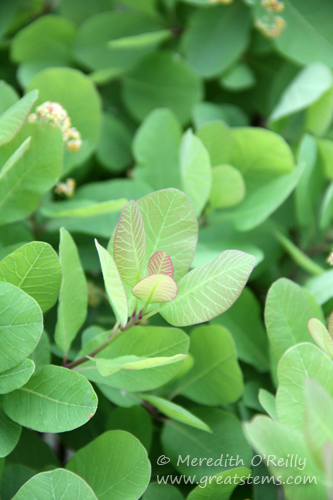 American Smoke Tree
American Smoke Tree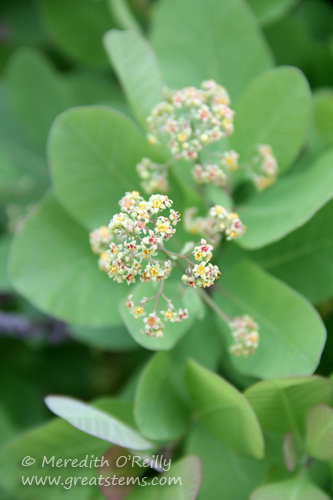
While Landa Park’s American Smoke Tree might still be young by tree standards, it still seems gigantic to the 1-2 foot tall specimens I have in my yard, so small that I’m still working to ensure they establish.
In all, Landa Park’s Arboretum is home to at least 55 species of trees, most of which are native. The Arboretum walk is 1.25-miles, and you can print a map here to take with you if you have a chance to visit. There’s history to many of the trees that were selected for the Arboretum, whether native or non-native.
I’ll end the tour with a big, old Cottonwood over by the river.
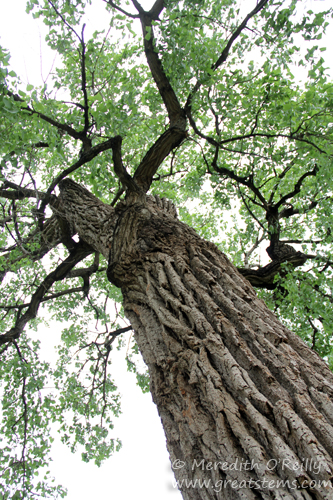
Even though I don’t personally grow a Cottonwood, as it is a riparian tree, I fell in love with the bark and had to share a pic. Cottonwoods are excellent shade providers, are great for erosion control, and they are a host plant for several species of butterflies.
It turns out that my quick tree tour wasn’t nearly long enough to satisfy me. I must go back soon.
Love this summary of the trees you saw – “grand-daddies” to the ones you’ve planted in your yard. It amazes me how different the plant palette is down your way. We’re in south central Kansas, basically due north of you, and the only species you mentioned that would typically be native for us is the cottonwood.
Cynthia, we really do have a pretty large plant palette here. Texas is so big and has 11 different eco-regions, and with Mexico to the south but still being part of SE USA and SW USA we have quite the variety of plants to choose from! Of course, what grows best in one eco-region won’t necessarily work in the others, so you still have to pay attention.